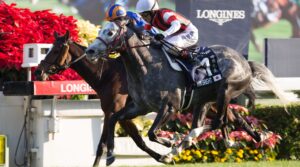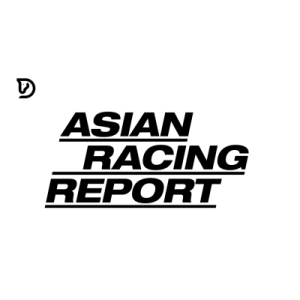The main purpose of this analysis is to ascertain whether Australian-bred horses perform relatively better over different distances. The HKJC International races, spread across four distinct distances on the same day and at the same G1 level, afford an excellent opportunity for comparison.

WARNING: This is a statistical analysis and one should be guarded about what inferences should be drawn without further analysis of the data. One should also be mindful of the size of the horse population (in this case the broodmare population of a country) from which these statistics have been drawn. According to the International Stud Book Committee, these were the number of broodmares served in 2021 in the following countries:
- Australia: 20,140
- France: 8,070
- Great Britain: 6,946
- Ireland: 13,149
- Japan: 10,325
- New Zealand: 4,388
- South Africa: 2,463
- United States of America: 27,618
It is clear from this list that New Zealand produces less than a quarter of the number of horses that Australia does, and that Great Britain produces slightly more than 50% of the Irish output. (Ireland is the largest producer of racehorses in Europe and the third largest in the world.) It is worth noting that Japan, being a country much smaller in size than Australia, still produces the equivalent of about 50% of Australia’s foal numbers.
The reader should keep these numbers in mind when analysing the following table which shows the birth country for the winners of the HKJC Internationals over the last 20 years.
| THE SPRINT (6F) | |
| Australia | 12 wins by 9 individual horses |
| Japan | 3 wins by 2 individual horses |
| New Zealand | 2 wins by 1 individual horse |
| Ireland | 2 wins |
| South Africa | 1 win |
The domination by horses bred in Australia is truly significant. Australia is the best source for speed horses. What is remarkable about these Australian winners is that to date none has been by Snitzel (2002) or one of his sons. Snitzel has been champion sire (by earnings) in Australia four consecutive seasons from 2017 to 2020 (inclusive) and is noted for producing speed horses. This is a statistic that waits to be corrected.
| THE MILE (8F) | |
| Australia | 5 wins by 4 individual horses |
| New Zealand | 6 wins by 5 individual horses |
| Japan | 3 wins |
| United States of America | 3 wins by 1 individual (Good Ba Ba) |
| Ireland | 2 wins |
| Great Britain | 1 win |
The record of New Zealand bred horses at this distance is astounding, not just by comparison with Australia but also by comparison with the other four countries listed. These five winners were:
- Lucky Owners (2003)
- Beauty Flash (2010)
- Able One (2011)
- Ambitious Dragon (2012)
- Beauty Generation (2017-2018)
The breeding of Beauty Generation is worthy of note. He is by Road to Rock (2004), a son of Encosta de Lago (AUS) (1993). The second dam of Encosta de Lago, Rolls (1984), is also the dam of the Golden Slipper winner Flying Spur (1992). This bloodline has been very successful in Hong Kong, especially at the Internationals. In 2007, a son of Encosta de Lago won the Sprint (Sacred Kingdom). In 2008, a son of Flying Spur (Inspiration) won the Sprint. In 2009, Sacred Kingdom won the Sprint again. In 2021, Sky Field, by Deep Field (2010), by Northern Meteor (2005), a son of Encosta de Lago, won the Sprint and in 2022 Wellington, by All Too Hard (2009), by Casino Prince (2003), by Flying Spur, won the Sprint. So, these two horses and their sire line has accounted for five of the 12 wins by Australian horses against international competition in the Sprint.
| THE CUP (10F) | |
| Ireland | 5 wins |
| Japan | 5 wins |
| Great Britain | 4 wins |
| France | 3 wins |
| United States of America | 2 wins by 1 individual horse |
| New Zealand | 1 win |
Past a mile the relevant statistics have undergone so dramatic a change that they bear no resemblance to the SPRINT table. Australia does not even get a mention. The country with the best record is Great Britain (bearing in mind the size of the broodmare population). We are entitled to ask, what is the cause of this shift? It is my opinion that the difference lies in the concept of a “CLASSIC RACE”. The etymology of the word “class” is significant in this regard. Its origin is Latin and goes back to the sixth century BC. Then the king of Rome, Servius Tullius divided the Roman population into a number of divisions for the purpose of taxation. Each such division was called a “classis”. This is the origin of expressions such as “the upper class” and “the working class”. A citizen of the highest classis was called a “classicus” and it is from this word that the expression “it is a classic” – meaning “of the highest order” – is derived. The classic races for thoroughbreds were introduced in England for a purpose. This was to determine which horses were the BEST in each generation. These were horses which would be selected for breeding.
To make this determination, a series of races, which are true CLASSICS, are run over different distances restricted to horses of the same age and all competitors of the same sex must carry the same weight. In England there are five Classics all for 3YOs. The two Guineas (8F), The Derby and the Oaks (12F) and the St Leger (14F). There is no Classic below a mile. The richest race in England remains the Derby and geldings are ineligible given that this race has a specific purpose. At the end of each season the handicapper would issue what was known as the Free Handicap for 2YOs and 3YOs in which he would hypothetically weight a generation according to their excellence. It was this system that singled out Galileo (Ire) (1998), winner of the Derby and Champion European 3YO. He has proven to be a great sire. He holds the world record for the number of G1 winners sired by any stallion.
In Australia there are no 3YO races designed to definitively determine which are the best of a generation in such a way as to improve breeding stock. Each state has its own Guineas, Derby (geldings are eligible) and Oaks – it is a matter of “take your pick”. Instead, 2YO races have been elevated to determining the leaders of a generation, with the Golden Slipper taking pride of place. This is a determination made at a single distance – the distance of the International Sprint. Precocity and speed have overtaken stamina, and even the concept of versatility at different distances such as when a British 3YO wins the triple crown, or three of these Classics. Instead of a single series of races as 3YOs (geldings ineligible) to determine the cream of a generation, Australian racing has devolved into splashing about millions of dollars into hyped up races open to horses of different ages and which do little to advance the quality and type of horse bred in Australia. They are often won by geldings. The first three placegetters in this year’s Everest – the world’s richest turf horserace – run over 1200m, were all geldings.
| THE VASE (2400m) | |
| Great Britain | 6 wins |
| Ireland | 6 wins by 5 individual horses |
| Japan | 4 wins by 3 individual horses |
| France | 4 wins by 3 individual horses |
This table resembles that of the Cup and is quite alien to that for the Sprint. Once again, Great Britain has the best record as it has the smallest number of broodmares for any country in the above list. This table is food for thought about the future of Australian breeding. Why should thoroughbred breeders in Australia improve the quality of horses they breed to be competitive on the world stage at 2000m and beyond? Most of the G1 races in Australia past a mile are open to 4YOs and upwards. It’s expensive to keep a horse sound until it is a 4YO. A thoroughbred’s bones do not set until it is a 4YO. To pressure a horse as a 2YO means that it may well be subject to a variety of problems. So, to preserve a horse until it is a 4YO requires patience and some financial pain. The average price for a yearling at the 2022 Sydney Easter Yearling Sale was $399,700, and this figure will only increase if patience is exercised. Why not now fly to England or these other countries and buy a readymade 4YO entire for about the same money, then there would be no need for the same amount of patience? In other words, treat England, Ireland and France as the nursery for Australia’s 4YO and older crops which have to perform at G1 level past a mile? Perhaps gelding them may lead to a big improvement. There is a response to this speculation. Australia has the second largest broodmare population in the world and the breeders cannot all specialise in producing the same product. If there were a proper set of Classic races (entires only) for 3YOs in Australia with suitable prizemoney levels then that would be the basis for elevating the quality of middle distance and staying horses bred in Australia.
